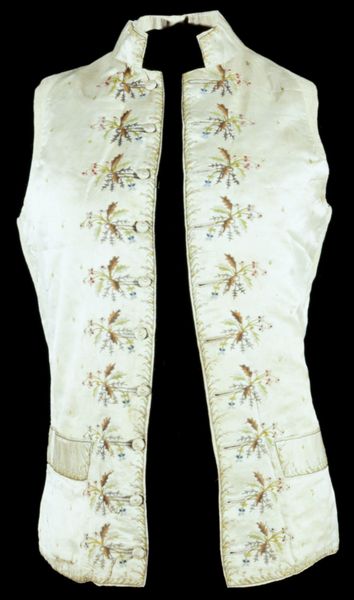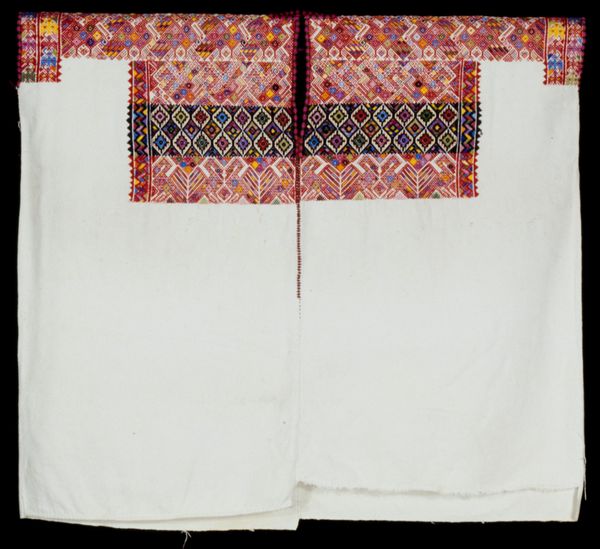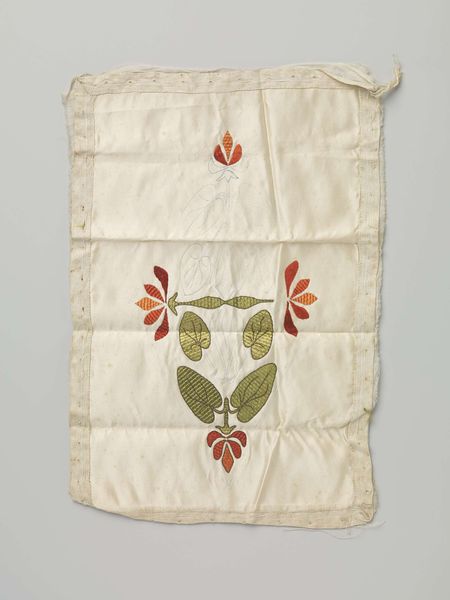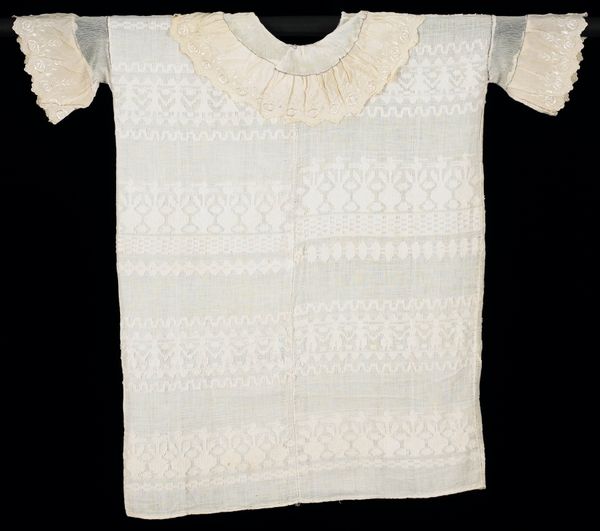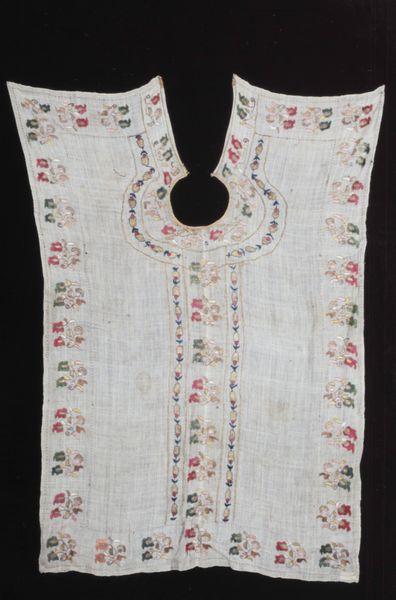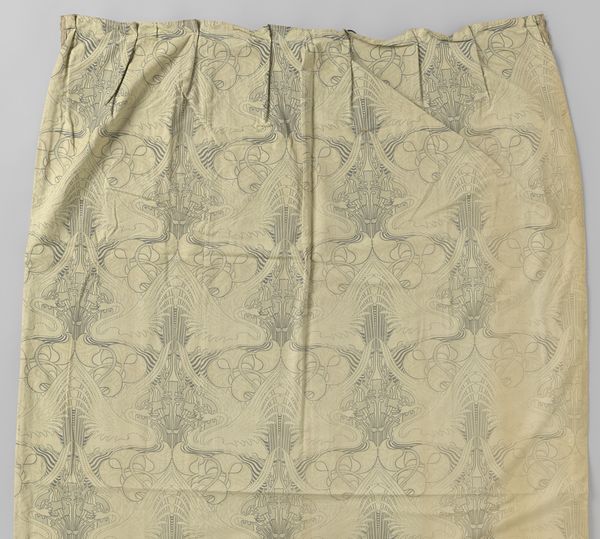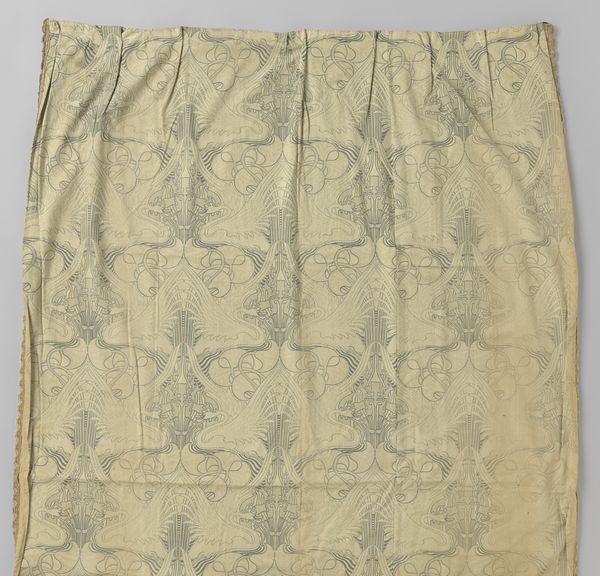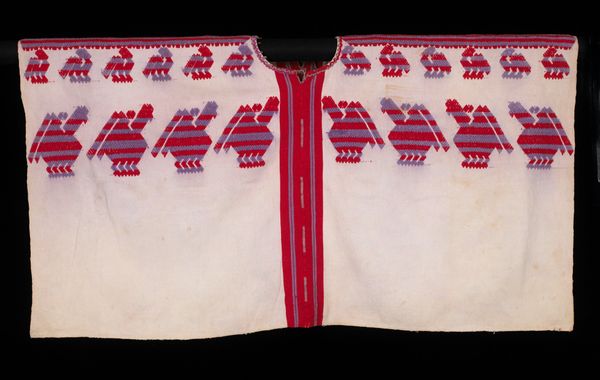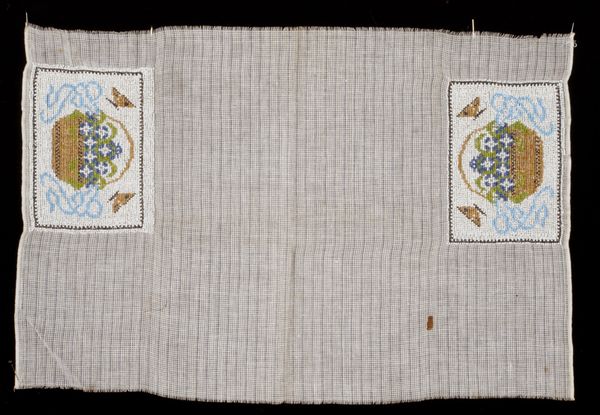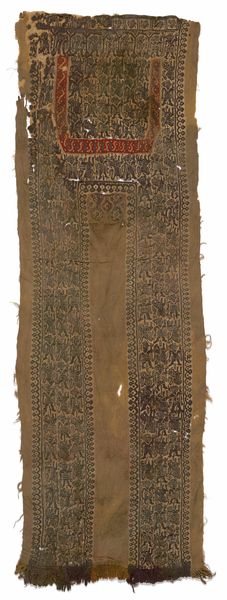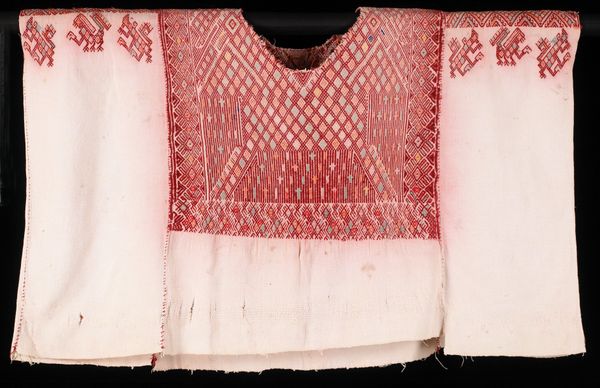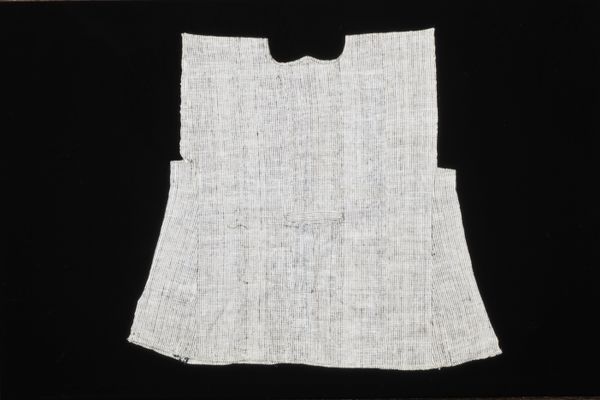
fibre-art, weaving, textile, cotton
#
fibre-art
#
textile
#
weaving
#
textile
#
cotton
#
indigenous-americas
Dimensions: 30 x 28 in. (76.2 x 71.12 cm)
Copyright: Public Domain
This woman's blouse, or Huipil, was likely made in Guatemala by a Maya artist, though its exact date remains unknown. Huipils are more than just garments; they are deeply embedded in the social and cultural fabric of Maya communities. The patterns and symbols woven into the fabric carry significant meaning, often indicating the wearer's community, social status, and even personal beliefs. The imagery can reflect the natural world, religious beliefs, and historical events significant to the Maya people. Examining the motifs closely, we might see representations of animals, plants, or cosmological symbols, each with its own complex history and cultural significance. Understanding the social conditions in which this huipil was created requires delving into the history of the Maya people and their ongoing resilience in the face of cultural and economic challenges. We can research the local weaving traditions, the availability of materials, and the ways in which women have historically used textile production as a means of cultural expression and economic empowerment. The huipil serves as a powerful reminder of the rich artistic and cultural heritage of the Maya people, as well as the ongoing importance of understanding art within its specific social and institutional context.
Comments
No comments
Be the first to comment and join the conversation on the ultimate creative platform.
